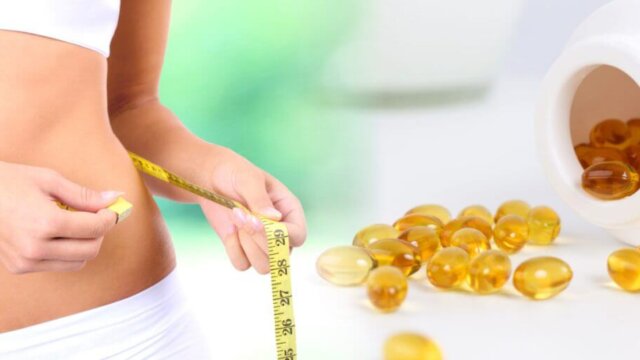FTC disclaimer: This post may contains affiliate links and we will be compensated if you click on a link and make a purchase.
Poison ivy rashes are quite common, affecting up to 75% of people allergic to its urushiol oil. It grows almost everywhere in the US, except for Alaska, Hawaii, and parts of the West Coast.
Knowing how to spot and avoid it is the best way to stay safe. But, if you get a rash, you might see itching, swelling, and blisters. Thankfully, there are many home remedies and store-bought products that can help.
Key Takeaways
- Poison ivy rashes can often get better by themselves, but bad cases might need a doctor’s attention.
- Using bentonite clay, oatmeal baths, and products with zinc could ease your symptoms.
- Doctors might suggest antihistamines and steroid creams to help with itch and swelling.
- Using things like baking soda, cold compresses, and not scratching could make you feel better.
- If you have a bad rash, see a doctor, especially if it’s all over or makes you really sick.
What is Poison Ivy?
Poison ivy is found all over North America and causes a strong itch when touched. It has groups of three leaves and either crawls on the ground or stands up. Knowing how poison ivy looks in every season is important. This helps you stay away from it and not get a rash.
Recognizing Poison Ivy in Different Seasons
Poison ivy looks different as the year goes on. In spring, its leaves might be red. By summer, they turn to a shiny green. Fall brings out bright orange, red, or yellow colors. It might also have whitish-yellow berries or tiny flowers then. Knowing poison ivy’s look each season is a good way to stay safe.
This plant can be a vine or grow like a low bush. Its leaves are always in groups of three and shiny. Learning these main features helps you spot poison ivy easily. This is important in different places and times of year.
Rubbing Alcohol for Removing Urushiol Oil
If you touch poison ivy, you should act fast to clean your skin. Rubbing alcohol works well for this. The American Skin Association says 10-15% of people are very allergic to poison ivy. So, quick cleaning is important.
Rubbing alcohol can get rid of most of the poison ivy oil if you use it within 4 hours. It’s smart to have alcohol wipes with you outdoors. Use them right away after touching poison ivy. The FDA says the oil can stay on things for years unless you clean it with alcohol or water.
When you use rubbing alcohol, make sure to clean everything well. Wipe your skin and any items that touched the plant. This includes clothes, shoes, tools, and even your pet’s fur. Toss out anything that touched the poison ivy to stop the oil from spreading.
Rubbing alcohol is good at first, but it might not get rid of all the oil. You should also wash with soap and water. Maybe use products made for poison ivy. This will help keep your skin clean and avoid a bad reaction.
Act quickly to get rid of the poison ivy oil from your skin. Using rubbing alcohol right away can make the rash less severe. If the rash doesn’t go away, see a doctor. They can help treat it so you don’t get sicker.
Shower or Bathe to Wash Off Plant Oils
It’s very important to act fast if you touch poison ivy. After touching it, quickly wash your skin and under your nails with plain soap and warm water to get rid of the oil. This stops the rash from spreading and makes any allergic reaction less severe. Also, wash any clothes or tools that might have touched the plant.
Once the rash appears, taking short, cool showers can help. Use water that feels just warm, not hot, to avoid making the rash worse. After your shower, gently pat your skin dry. Don’t rub it, and don’t try to scrub the rash. Scrubbing can make the swelling and itching worse.
For even more relief, add a half cup of baking soda to your bath water. Baking soda can really help with the itch. You can also get relief by using tea tree oil or aloe vera on your skin.
Cleaning up well right after you touch poison ivy is crucial. This stops the rash from spreading and reduces how bad your reaction might be. By cleaning up properly, you wash away the plant oils and get rid of the itch and pain.
Cold Compress for Reducing Itching and Inflammation
Are you struggling with a poison ivy rash? A cold compress can bring relief at home. It helps cut down the itch and swelling that come with this skin problem.
How to Make a Cold Compress
Soak a washcloth in cool water, not too cold. Squeeze it gently and put it on the rash. Re-do it as it warms. Some add a special liquid to the water to help more.
Putting the rash in cool water is good too. It makes the skin feel less pain. But, never use hot water. It makes things worse.

Cold compresses are nice, but bad rashes need a doctor. If it stays bad, skin doctors might need to give you special medicine.
Resist Scratching the Skin
Scratching can make a poison ivy rash worse. It’s really important not to scratch it. This helps stop the rash from spreading and getting more sore.
When you scratch, you might burst the blisters. This can let in germs and cause an infection. Also, your nails could still have some poison ivy oil on them. You can spread this to other parts of your skin. That would make the rash itch more.
Here are ways to stop yourself from scratching:
- Put something cold on the rash. This will help you not feel like scratching it as much.
- Use a cream that stops the itch. Look for one with hydrocortisone or calamine.
- Keep your nails short. This way, if you do scratch by accident, it won’t make things worse.
- Wear loose clothes that let your skin breathe. This can stop the rash from getting more sore.
- Try doing something else, like reading, to take your mind off the itch.
Not scratching can mean the difference between a little rash and a serious infection. If you follow these tips, you can feel better and heal faster.
It’s hard not to scratch when it itches a lot. But, avoiding scratching is key to helping your skin get better. With the right care and patience, the rash from poison ivy will go away.
Topical Lotions and Creams for Relief
Dealing with a poison ivy rash can be tough, but lotions and creams can help a lot. Over-the-counter hydrocortisone creams are good for stopping the itch and swelling.
Products with zinc acetate, zinc carbonate, zinc oxide, and calamine can also treat the rash’s oozing and weeping.
Hydrocortisone Creams and Calamine Lotion
Always use these creams and lotions as the label tells you. Don’t use antihistamine creams on the rash; they can make it itch more. Use over-the-counter hydrocortisone creams and calamine lotion for itch relief from poison ivy.
Calamine lotion is very soothing for the rash. It helps dry out the blisters. The poison ivy rash usually goes away in 1 to 3 weeks. But these lotions and creams can ease the pain and speed up healing.

There are also some home treatments that work, like witch hazel and apple cider vinegar. A paste made from baking soda can also help dry up the rash. But, if the rash is severe, always talk to a doctor.
Oral Antihistamines for Reducing Inflammation
If you have a poison ivy rash, you know about the itch, redness, and soreness. Antihistamines can help calm your body’s reaction. They make the itch less.
Diphenhydramine is one choice for easing poison ivy symptoms. It’s known as Benadryl. It may make you feel sleepy. So, it’s good to use at night to help you sleep.
For the day, drugs like cetirizine (Zyrtec) and loratadine (Claritin) are good. They don’t usually make you sleepy. These medicines can fight off the itch and redness without making you tired.
Always take antihistamines as directed. If you’re not sure, ask a doctor or pharmacist. Using them right can make you feel better and speed up healing.
Antihistamines are helpful for easing poison ivy symptoms. But, if your rash is bad or you have other worries, see a doctor. It’s the best thing to do if it’s not getting better.
Oatmeal Bath for Anti-Inflammatory Properties
If you have an itchy, inflamed rash like poison ivy, an oatmeal bath can help. It’s been found that oatmeal has power to reduce inflammation and stop cell damage. Just mix oatmeal in your bath water to make itchiness go away. You can also put oatmeal right on the rash for quick relief.
People have used oatmeal for skin troubles for a long time. It can help with rashes, burns, bug bites, and more. Ground-up oatmeal has been used since 1945. You can find it in things like soap, shampoo, and creams.
Oatmeal baths make your skin less dry and irritated. It’s easy to make your own bath product. Just mix ground oats into your bath and soak for a bit.
Oatmeal baths work well for many skin issues. For example, they can help with itchy, flaky skin on the legs. This was shown in a study from 2015.
Oatmeal baths don’t usually cause problems. But, use them just once a week for small issues, and less often for bad problems like psoriasis. Sometimes, you might need more than oatmeal, especially for serious skin diseases.

The FDA says oatmeal baths help with skin problems. Many skin care items have oatmeal in them, like lotions and face masks.
Having trouble with poison ivy or eczema? Try an oatmeal bath at home.
Bentonite Clay for Contact Dermatitis Relief
Bentonite clay is a natural remedy with detox powers. It helps people with poison ivy rashes. Studies show that it can act as a detoxifying agent. It helps cope with the itch and discomfort from poison ivy.
Bentonite clay, also known as Montmorillonite clay, comes from volcanic ash. People have used it for healing for years. Mix it with water or apple cider vinegar to act as a strong bacteria-fighting mix. Apple cider vinegar makes it blend well, unlike water.
The right pH is key. Apple cider vinegar is acidic, and bentonite clay is alkaline. Mixed, they’re perfect for the skin. Bentonite clay sticks to bad stuff and pulls it out when used on the skin.
The mix also uses oils like peppermint oil, tea tree oil, and lavender oil. Peppermint oil stops pain and fights fungi. Tea tree oil cuts swelling and is good for the skin. Lavender oil helps heal, fight germs, and calm the skin.
The mix includes 2 tablespoons of bentonite clay and apple cider vinegar. Add 2 drops of oils for an easy-to-apply paste. Use it a few times a day or overnight for extra help with poison ivy.
Thanks to studies and old wisdom, bentonite clay is great for poison ivy. It brings comfort and speeds healing.
Baking Soda for Soothing Itchy Skin
Many find baking soda a helpful remedy for poison ivy rash symptoms. This natural helper is great for more than just baking. The American Academy of Dermatology suggests adding baking soda to your bath for itchy poison ivy skin.
Baking soda is a type of salt with anti-inflammatory power. This helps with the itching and irritation from poison ivy. When made into a paste or bath addition, it can calm skin. This method is simple and provides fast itch relief without any harsh chemicals.
To use it, mix a little baking soda with water to form a paste. Put this on your skin and rinse after a few minutes. Or, add some baking soda to a bath and soak for 15-20 minutes. You can repeat this as needed for comfort.
Remember, baking soda shouldn’t go on bad or open skin. In those cases, see a doctor to avoid more harm. Used wisely, baking soda is a simple, natural way to calm skin and stop the itch.
“Baking soda is a versatile, inexpensive, and natural way to soothe the itchy, irritated skin caused by poison ivy. Its anti-inflammatory properties make it an effective home remedy for this common skin condition.”
Prescription Steroids for Severe Cases
Poison ivy gives a rash that is really irritating. For bad cases, you might need prescription drugs to find relief. Steroids, like prednisone, can lessen the itch and swelling when other medicines don’t work.
Doctors might give you these strong drugs if the rash is on a big part of your body or on places like the face, hands, or privates.
There are oral steroids that come as pills to help with symptoms all over the body. But, taking them for a long time can cause problems like bone changes, skin getting thin, more chances of getting sick, and stomach ulcers.
Doctors might also recommend using creams or ointments on the skin to stop the itch and redness. Sadly, these creams usually don’t help with the blisters.
If the poison ivy is really serious, you might get a steroid shot for quick relief when pills are not okay. Remember, normal hydrocortisone cream from the store isn’t strong enough for big poison ivy cases.
It’s key to carefully listen to your doctor and finish all your steroid medicine. Doing so helps avoid problems. Your doctor might also suggest using cold packs, taking oatmeal baths, or antihistamines by mouth. These can all help give you relief from poison ivy.
Prescription Steroids for Severe Poison Ivy | Potential Benefits | Potential Risks |
|---|---|---|
Oral Corticosteroids (e.g., Prednisone) | – Reduce overall inflammation and symptoms – Provide rapid relief for widespread or sensitive rashes | – Increased risk of bone changes, skin thinning, infections, and stomach ulcers with prolonged use |
Topical Corticosteroids (e.g., Clobetasol, Betamethasone, Triamcinolone) | – Target the rash directly to alleviate itching and redness – More potent than over-the-counter hydrocortisone | – May not effectively treat blisters |
Corticosteroid Injections (e.g., Kenalog) | – Provide rapid, targeted relief for severe reactions when oral medication is not an option | – Effects only last 24-48 hours |
For a serious poison ivy reaction, get to a doctor if large areas of your skin are involved or the rash is on sensitive spots. Prescription steroids work well but they do need a doctor’s watch to reduce side effects.
When to Seek Medical Attention
Most poison ivy cases get better without seeing a doctor. But, there are some signs when medical help is needed. If the rash is over a quarter of the body or looks bad with pus, see a doctor. Also, if you can’t stop itching and it affects your sleep or if the rash is near your eyes, mouth, or private parts, get help.
But, if you have trouble breathing or a fever over 100 degrees, get to the ER right away. Most treatments don’t quicken healing but make you feel better and stop the rash from getting worse.
Bad cases might need steroids by mouth, in a cream, or through a shot. Remember, antihistamines don’t help with poison ivy rashes. Don’t scratch as it can make things worse and cause infections.
Should the rash last over a week without getting better, see a doctor. Acting early can keep things from getting worse. Places like urgent care are good for quick and effective help for poison ivy.

Most poison ivy clears up in 1-3 weeks on its own. Still, watch for signs you might need a doctor. Quick care can prevent serious problems.
Prevention Tips for Avoiding Poison Ivy
Know how to avoid poison ivy to stay rash free. Even though many get a rash, you can stay safe by learning a few tricks.
First off, learn what poison ivy looks like. In the Eastern U.S., it’s a vine; in the West, it’s a shrub. Poison oak is mainly a shrub in the East but a vine in the West. Poison sumac has 7 to 13 smooth leaflets and loves wet places across the U.S.
If you can’t avoid the plant, safeguard your skin. Wear long clothes and gloves when outside. Also, use bentoquatam before you go out to cut risk.
After touching it, wash everything well. Clean under your nails, too. Get rid of the plant in your yard to prevent a rash.
Last, have a poison ivy kit ready if you get exposed. It should include rubbing alcohol and soap. These steps can really help prevent a nasty rash from poison ivy.
In short, Home Remedies for Poison Ivy
If you’ve ever come into contact with poison ivy, you understand how itchy and painful the rash can be. Luckily, there are many home remedies that can ease the discomfort.
To start, remove the urushiol oil by washing the area with rubbing alcohol. This oil is what causes the allergic reaction. A lukewarm shower can also help wash off any left-over oil from the plant.
For itching and swelling, a cold compress can be very soothing. You can make one by wrapping ice in a cloth. Try to not scratch the rash to avoid infection.
Hydrocortisone creams and calamine lotion can also help by reducing inflammation. A
antihistamine, like diphenhydramine, can relieve itching.
Natural remedies include an oatmeal bath. Colloidal oatmeal has properties that can calm the irritation. Using a paste of bentonite clay and water may also soothe the skin.
If home treatments don’t work, or if the rash gets worse, see a doctor. They may prescribe steroids or other medicines. Also, if you have trouble breathing or swallowing, get medical help right away.
Using these remedies can help reduce discomfort and heal the rash faster. But, it’s best to avoid poison ivy plants altogether. Learning to spot and stay away from them is the best defense against the rash.
Conclusion
The search for ways to help with poison ivy rashes has shown us many easy steps. You can use rubbing alcohol to get rid of the oil.
Taking a lukewarm bath can make you feel better. Also, a cold compress can help. Try not to scratch. This makes the itching and swelling less. You might also find relief from over-the-counter lotions and antihistamines.
An oatmeal bath or bentonite clay paste may help too. They have things in them that can lower swelling. Usually, these rashes go away without much trouble.
But, if your rash is really bad, you might need special medicine. In this case, see a doctor. Remember, to fight off these rashes, act fast and avoid more poison ivy. Use home remedies and get help from a doctor when you need to.
The best way to deal with poison ivy is to prevent it. Learn how to spot and stay away from these plants. Knowing about poison ivy’s effects can keep you safe. With the right information, you can avoid the itchy rash and have fun outside.
FAQ
What is poison ivy and how can it be recognized?
Poison ivy is a plant with three shiny leaflets that can be a vine or a small shrub. Its leaves change color through the seasons. Knowing how poison ivy looks can help you stay away from it. This reduces the chance of getting a rash.
How can rubbing alcohol help with poison ivy?
Rubbing alcohol takes off the oil from poison ivy that sticks to your skin and gear. Make sure to use it with alcohol wipes if you’ve been near poison ivy. This is good for trips in the woods or camping.
What should I do after being exposed to poison ivy?
If you think you touched poison ivy, wash your skin and nails with soap and water. Do this step as soon as you can. Also, clean anything that might have touched the plant, like clothes or tools, with gloves on.
How can a cold compress help with a poison ivy rash?
A cold cloth can help stop the itch and swelling. Wet a clean cloth with cold water, then gently press it against the skin. You can do this as many times as you need.
Why is it important to avoid scratching a poison ivy rash?
Don’t scratch the rash to prevent infection. It’s because scratching can break the blisters. This might lead to a worse rash if poison ivy’s oil gets under your skin from your nails.
What types of topical treatments can help with a poison ivy rash?
Creams with hydrocortisone help with the itch and swelling. For rashes that weep, use products with zinc or calamine. Always follow the instructions when applying these.
How can oral antihistamines help with a poison ivy rash?
Medicines like Benadryl can make the rash less itchy and swollen. A pharmacist can recommend one that doesn’t make you sleepy, if needed.
How can oatmeal and bentonite clay provide relief for a poison ivy rash?
Oatmeal can soothe the rash because it fights inflammation. You can add it to your bath or use oatmeal paste. Bentonite clay mixed with water also helps by calming the skin.
When should I seek medical attention for a poison ivy rash?
Call a doctor if the rash covers a big area, is very bad, or if you see signs of infection. A rash on critical areas like the eyes or if you have breathing troubles needs a doctor’s care. If it’s been a week and it’s not getting better, see a healthcare provider.
How can I prevent exposure to poison ivy?
The key to avoiding poison ivy is knowing how it looks and staying away from it. If you can’t, wear protective clothes and use products with bentoquatam. Also, wash anything that might have touched poison ivy and keep your garden clear of it.








